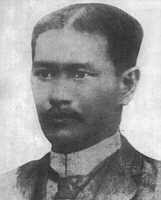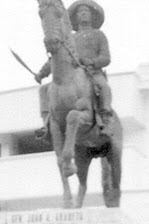From: jimmy araneta
Subject: [aranetaclan] The DIFFERENCE!! !!
Date: Wednesday, August 19, 2009, 4:38 AM
The DIFFERENCE!! !!
Here is a good article sent by Dr. Arsenio Martin of Fort Arthur , Texas ...
Enjoy reading.
THE DIFFERENCE
The difference between the poor countries and the rich ones is not the age of the country:
This can be shown by countries like India & Egypt , that are more than 2000 years old, but are poor.
On the other hand, Canada , Australia & New Zealand , that 150 years ago were inexpressive, today are developed countries, and are rich.
The difference between poor & rich countries does not reside in the available natural resources.
Japan has a limited territory, 80% mountainous, inadequate for agriculture & cattle raising, but it is the second world economy. The country is like an immense floating factory, importing raw materials from the whole world and exporting manufactured products.
Another example is Switzerland , which does not plant cocoa but has the best chocolate in the world. In its little territory they raise animals and plant the soil during 4 months per year. Not enough, they produce dairy products of the best quality! It is a small country that transmits an image of security, order & labor, which made it the world's strongest, safest place. Or Finland a small country with small population who is known the world over as the maker of the cellphone brand NOKIA
Executives from rich countries who communicate with their counterparts in poor countries show that there is no significant intellectual difference.
Race or skin color are also not important: immigrants labeled lazy in their countries of origin are the productive power in rich European countries.
What is the difference then? The difference is the attitude of the people, framed along the years by the education & the culture & flawed tradition.
On analyzing the behavior of the people in rich & developed countries, we find that the great majority follow the following principles in their lives:
1. Honesty, as a basic principle.
2. Integrity.
3. Responsibility.
4. Respect to the laws & rules.
5. Respect for the rights of others
6. Creativity & Work ethics.
7. Strive for savings & investment.
8. Will of super action.
9. Punctuality.
10. and of course...Discipline
In poor countries, only a minority follow these basic principles in their daily life.
The Philippines is not poor because we lack natural resources or because nature was cruel to us. In fact, we are supposedly rich in natural resources.
We are poor because we lack the correct attitude. We lack the will to comply with and teach these functional principles of rich & developed societies.
If you do not forward this message nothing will happen to you. Your pet will not die, you will not be fired, you will not have bad luck for seven years, and also, you will not get sick or go hungry.
But those may happen because of your lack of discipline & laziness,
your love for intrigue and politics, your indifference to saving for the future, your stubborn attitude.
If you love your country, let this message circulate so that many Filipinos could reflect about this, & CHANGE, ACT!
Jimmy Araneta
~~~~~~~~~~~~~~~~~~~~~~~~~~~~~~~~~oo0oo~~~~~~~~~~~~~~~~~~~~~~~~~~~~~~~~~~~~~
Reaction:
Salamat! Primo Jimmy, for transmitting this article "The Difference !!!!".
Excerpted: "...What is the difference then? The difference is the attitude of the people, framed along the years by the education & the culture & flawed tradition... ."
~~~~~~~~~~~~
Here's a portion of "Huwag Magpakatuta! !" published on October 1, 2007 in "Ang Pungsod Ilonggo" newsletter of the Ilonggo Nation Movement at www.ilonggoNation. blogspot. com that is relevant to the issue at hand;
" ...In recent history many Illustrados and scholars were housed, hosted and co-opted with the "Victors" --the early Colonizers and the Imperialists who came to fulfill our Manifest Destiny. This created a group of historians, the minions or "tuta" as propagandists with blind loyalty to their former Masters.-- at least for now. The Land of the Rising Sun also almost succeeded to implant their own brand of "our" history for future Filipino generations.
Ever since these lackey’s brain washing materials were adopted in Philippine Educational System, our grade school pupils learned and sang with negative notion: "I was poorly born on the top of the mountain"; My Nipa Hut is very small and Planting Rice is never fun". We know more about the history of the American Revolution and heroes; sang the Star Spangled Banner with patriotic fervor and Dreamt of a White Christmas. Worst, we had to pay fine for speaking our very own language in school campuses. The Good Manners and Right Conduct, a seperate Subject in Elementary Classes of the yesteryears was stricken-out in school curriculum.
Engrained in the minds of students, is a history of a failed Revolution, but glamorizing exploits of the Luzon Revolucionarios or losers. While the defeat and documented formal surrender of Spain to the victorious Independent Federal Visayan Republic; and the heroic saga of the unconquered Bangsa Moro Nation in Mindanao ---are scarely, if ever mentioned in school text books and only relegated to the dustbin of history. Thus, only to become a travesty of the past and lost in the hazy twilight of our memories.
These people even have the gall to initiate ahead the construction of Magellan shrine to be revered by Filipinos while naming a grouper fish "Lapu-Lapu" -- after our foremost hero, whose statue was erected very much later.
Presently, most of us still suffer the hang-over of Magellan discovering the "Islas" and W.H. Scott converts insistence of early Malay Datus from Borneo emigration to Panay in "Maragtas" a hoax. While ancient Chinese Ming Dynasty chronicles recorded otherwise... ..."
And so, perhaps, the objectionable attitude and incomprehensible character of many of us is anchored on the systematic indoctrination that was effectively implemented sadtong mga traidor nga nagdampig sa mga naglupig sa aton mga katigulangan.
ang sa guihapon... dinggol.d~~~
~~~~~~~~~~~~ ~~~~~oo0oo~ ~~~~~~~~~ ~~~~~~~


















1 comment:
Dear Sirs,
This is in light of whether or not we as Ilonggos should not be represented in the flag, as true participants in the Revolution against Spain.
Lawmakers have instead pacified Mindanao...
Gordon's proposed bill adding yet another ray to the Philippine flag should concern all Filipinos but most especially us Ilonggos.
The eight rays within the white triangle represent the towns within Luzon that fathered the Philippine Revolution.
However, Santa Barbara, which actively participated under General Delgado, was never represented in the flag.
Gordon and even Puentebella maintain that Muslim resistance to colonial rule merits a ray. Problem is, Mindanao is already one of three stars that mark our flag.
Whatever for is this bill? It begs a timely answer- acknowledge the " Cry of Santa Barbara" in it's proper context.
Omon Maravilla
Oct 3, 2009
Post a Comment